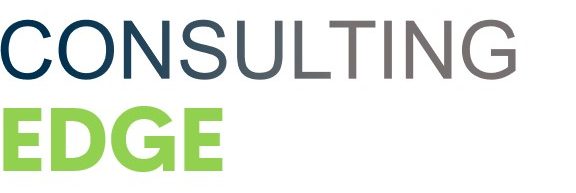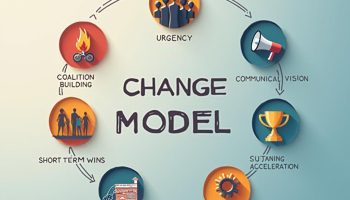The terms of reference set out the goal, the people involved, the resources, and how the project will be planned. Strategic planning can help them be built at the start of a wind farm to be made at that time. They are used all the way through the project to keep an eye on how things are going and how they are meeting the original goals. So the first step in the design process is to broaden and clarify the goals and criteria that were set out in terms of reference, which are used to figure out how the project will end.
What does the word “terms of reference” mean?
Terms of reference is a document that explains who should do what when making or implementing a plan. For example, it might be good to write a set of rules for people on the committee that makes the water safety plan. These rules should outline what each person should do and how long they should stay on the committee. Terms of reference may also be helpful to make involved in implementing the water safety strategy, outlining their roles and what they should expect to happen.
Suppose you start creating and implementing a water safety plan with transparent terms of reference. In that case, everyone involved will know what they need to do and how their involvement will help the program work out. Good terms of reference should explain who, what, why, when, where, and how the reader is interested in terms of reference.
What is the purpose of terms of reference?
A practical method of ensuring that all individuals who have a voice in the project are aware of their roles and expectations is to use a formalized process. Stakeholders collaborate in order to accomplish shared objectives and a shared vision. It is possible that signing the terms of reference will ensure that everyone follows the rules and is accountable.
What factors should be considered before creating terms of reference?
Create one early on.
Before doing a lot of work, terms of reference should be made, tested, and agreed upon. When possible, a terms of reference should be tested and changed with critical stakeholders to ensure that important issues and goals are apparent and agreed upon.
Make sure you know what you’ll get.
A term of reference should say what the task force is supposed to do and when they should finish it.
Make sure you know how decisions will be made.
Often, it is essential to separate those who make decisions about what to do from those who run the task force on a day-to-day basis. Other people may help out just by giving advice.
Focus on critical issues:
A task force’s terms of reference should say what they should and should not do. Critical challenges (or ones that aren’t part of the project) might be on this list, how the project will solve problems, the people involved, or the solutions that will be looked at. The scope of terms of reference should match the number of resources available to do the job.
What should the terms of reference include?
Background:
The purpose of the evaluation and its reason: clear and concisely explain why the assessment is being done. The terms of reference of the job, the task’s main goals, and any references to other work the team should keep in mind as they start.
Assessment:
Assessment: a list of the people who will be able to use the evaluation: the evaluation is done with the prominent people in mind.
The evaluation questions:
It’s essential to ensure that the evaluation questions you ask are as specific as possible. What problem is it meant to solve? It is necessary to write these in simple language and not use jargon.
Review:
The review will be guided by certain principles and techniques (e.g. Research ethics, transparency, openness, etc.) This section explains what is and isn’t in the scope of the work. Again, bullet points are the best way to describe this.
Methodology:
The methodology section should show how the study was done following the evaluation questions, principles and techniques, target users, budget, and time constraints. It should also show how the study was done.
Stakeholders:
There are a lot of things to think about when you think about stakeholders. For example, who will be involved, how will they be consulted, who will do each task, and how will the assessment processes be done?
The budget should be particular and detailed. For example, it should include the cost of each employee’s salary, travel expenses, supplies and equipment, translations, copies, and communication costs, as well as each employee’s salary.
Assumptions:
There should be a list of assumptions in terms of reference. As time goes on, these are the things that you don’t know about but that will impact your piece of work. The next time you update your terms of reference, you may want to change this part because you may have been able to test your assumptions.
Data collection:
Planning, data collecting, analysis, reporting, and user facilitation and reporting are all part of the assessment process. This timeline and milestones are a description of how the process works.
Documents:
This section has documents about the subject and other projects that will help with the review. For example, who is in the squad? This section should give the names and jobs of the people who will be doing the job. In addition, you can say if they can only work on the project two days a week.
Deliverables:
Usefulness, feasibility, correctness, and appropriateness are some of the things that make an evaluation report suitable.
Format
It would be best to keep your terms of reference to a few pages as a general rule. There’s no need to make a fancy cover page or add extra pages to your paper. Then, start writing! You can always put version control information at the beginning or end of a document in a small table that is easy to read. People who write about what they think should include information about getting their ideas out there. And who they’re going to be talking to, and what they’re going to say, among other things.
The final verdict:
This allows everyone to read, talk about, and change the terms of reference before working. In addition, sub-terms of references may be needed for some project activities and people.
The first step in managing a high-quality evaluation is ensuring that the terms of reference are accurate and well-defined. The assessment terms of reference document serve as the foundation for a contract with terms of references. It lays out how the assignment’s performance will be judged and how the terms of reference will do their job.






